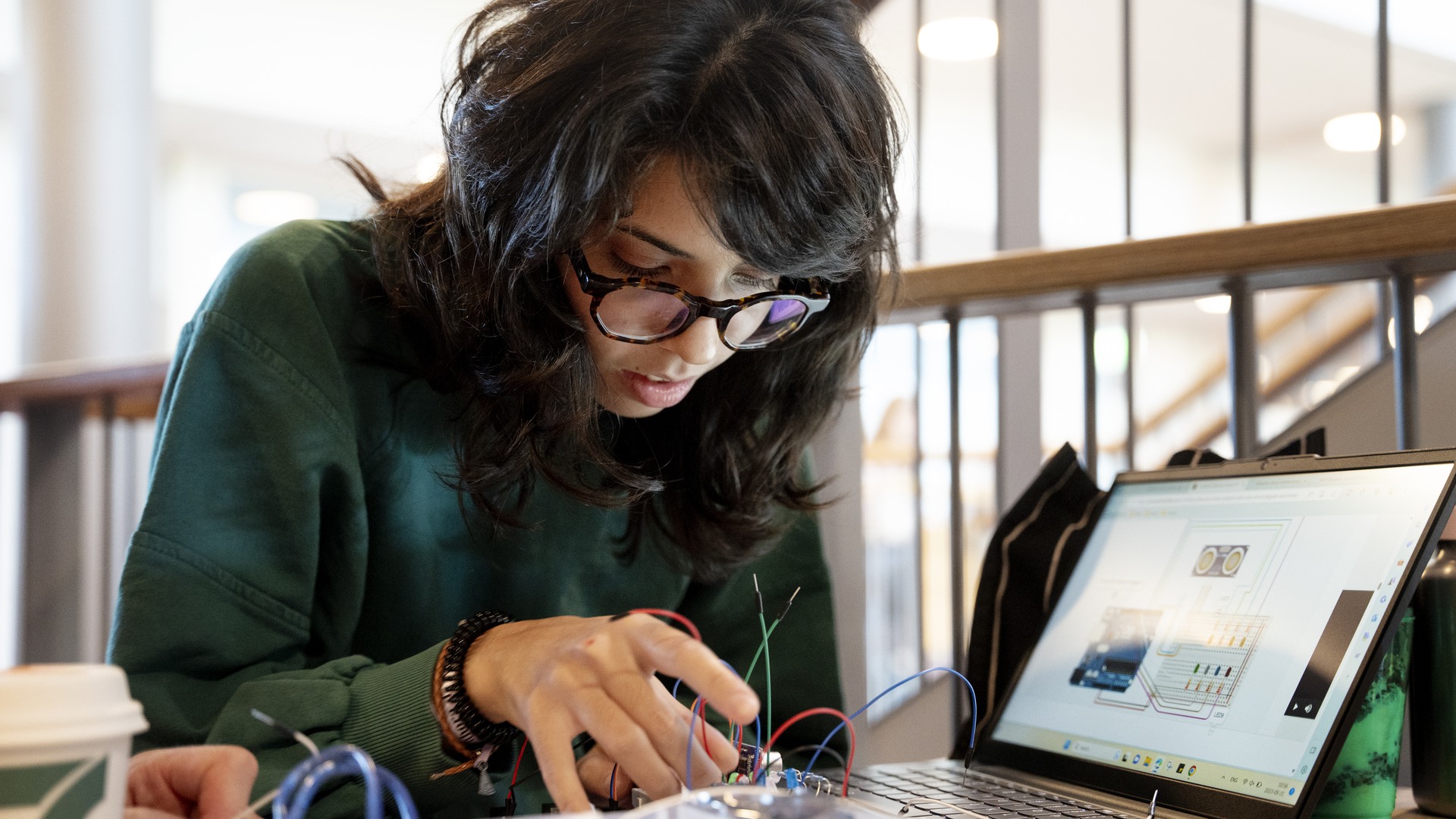- Tsiatsis, V, Karnouskos, S Holler, J, Boyle, D, Mulligan, C (2018). Internet of Things, 2nd Edition, Technologies and Applications for a New Age of Intelligence. Academic Press
Reference materials:
- Kurniawan, Agus (2021). IoT Projects with Arduino Nano 33 BLE Sense: Step-By-Step Projects for Beginners. Apres.
- Scientific articles provided by the teacher during the course.
EduSinglePage
About the course
The course provides a general overview of the Internet of Things (IoT). This includes technical knowledge as well as knowledge of the opportunities and risks associated with the technology.
This course is offered as part of programme:
Course content
- Sensors, actuators and wireless sensor networks
- Microprocessor technology for IoT devices (edge computing)
- Relevant network and communication technologies, such as WiFi, ZigBee and Bluetooth
- Security risks related to IoT
- Privacy issues related to IoT
- Mobile systems for IoT
- Platforms and cloud-based solutions for IoT
- Service design for IoT
- Key application areas for the IoT, such as ‘smart homes’, ‘smart cities’, ‘mobile health’ and ‘industry 4.0’, and their relation to the global goals for sustainable development.
Entry requirements
- Bachelor of Science in Engineering (at least 180 credits) or a bachelor’s degree in computer science or related fields such as computer engineering, computer and information science, software engineering, informatics, telecommunications or electrical engineering.
- At least 15 credits in programming.
- Equivalent of English 6 in secondary school.
Course literature
Course evaluation
The University provides students who are taking or have completed a course with the opportunity to share their experiences of and opinions about the course in the form of a course evaluation that is arranged by the University. The University compiles the course evaluations and notifies the results and any decisions regarding actions brought about by the course evaluations. The results shall be kept available for the students. (HF 1:14).


